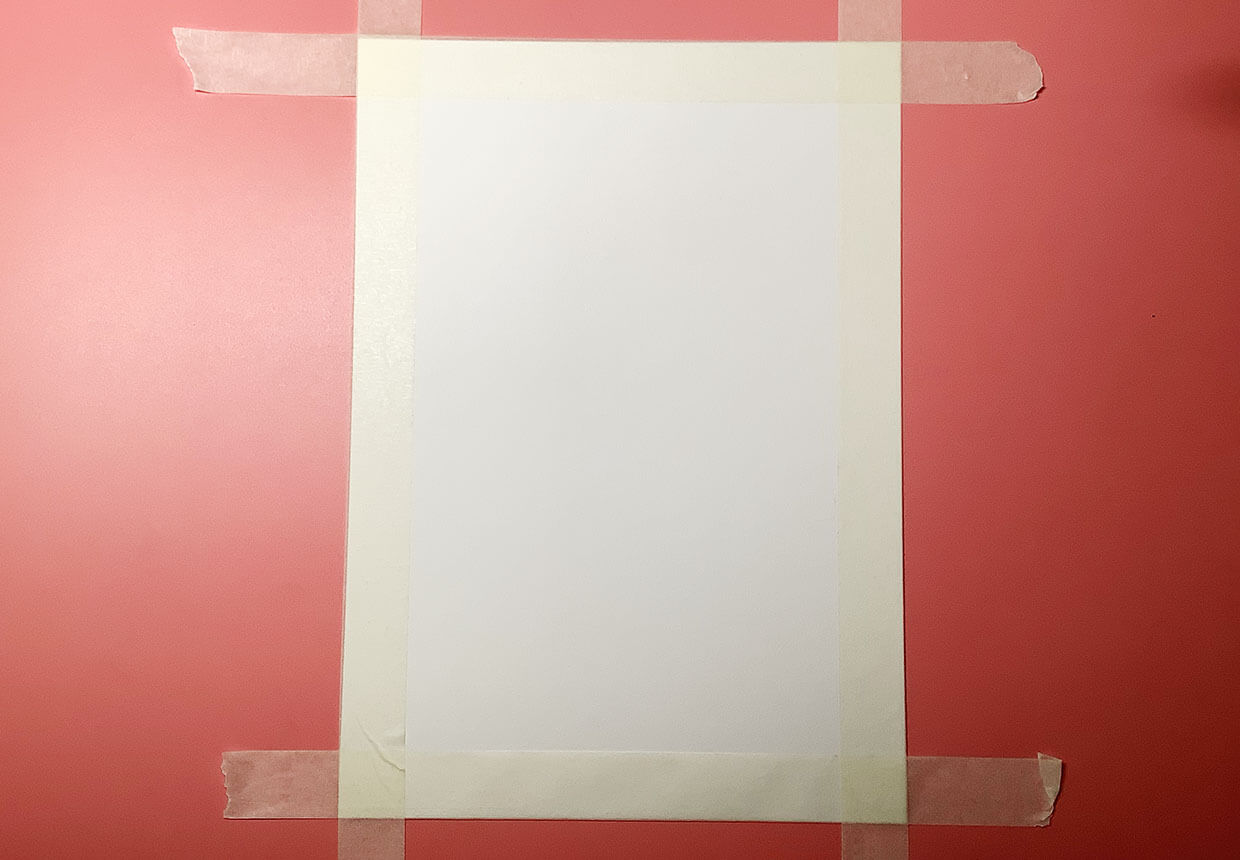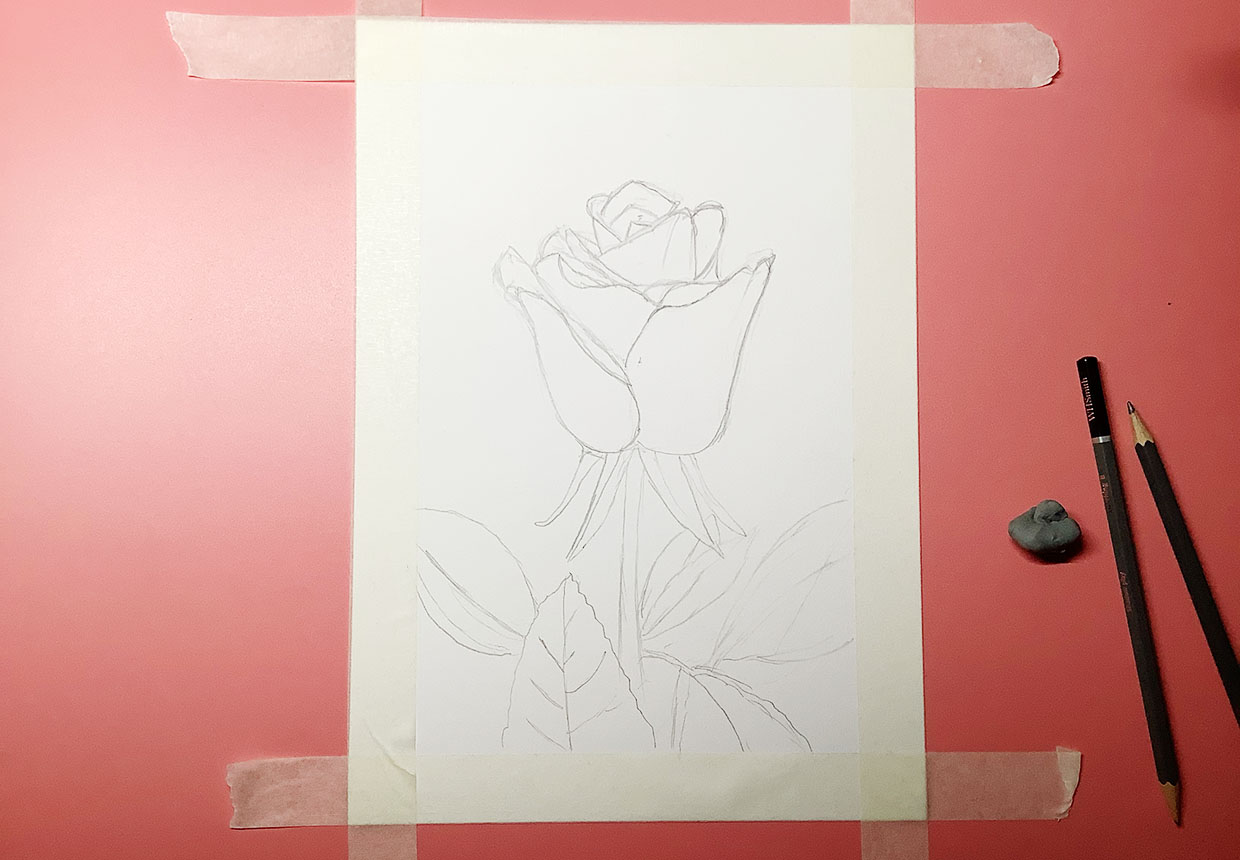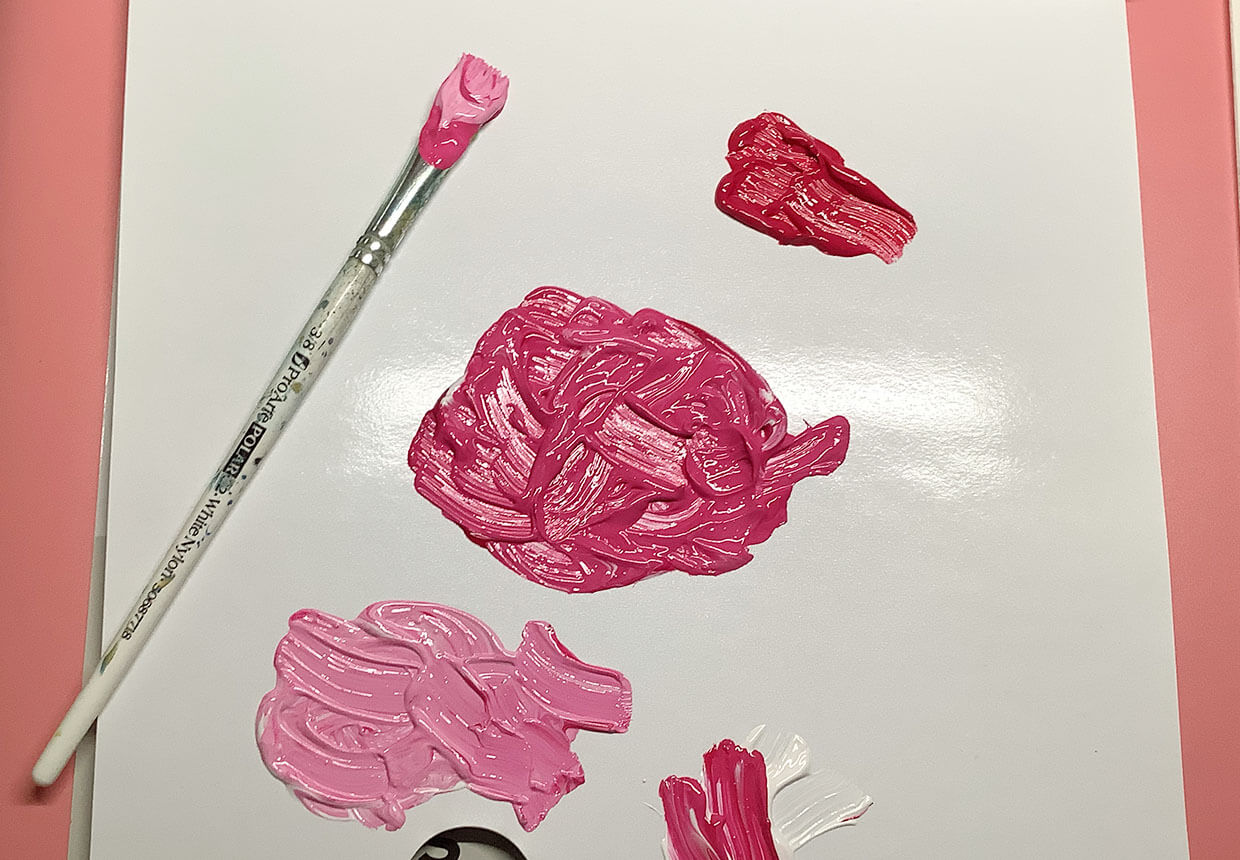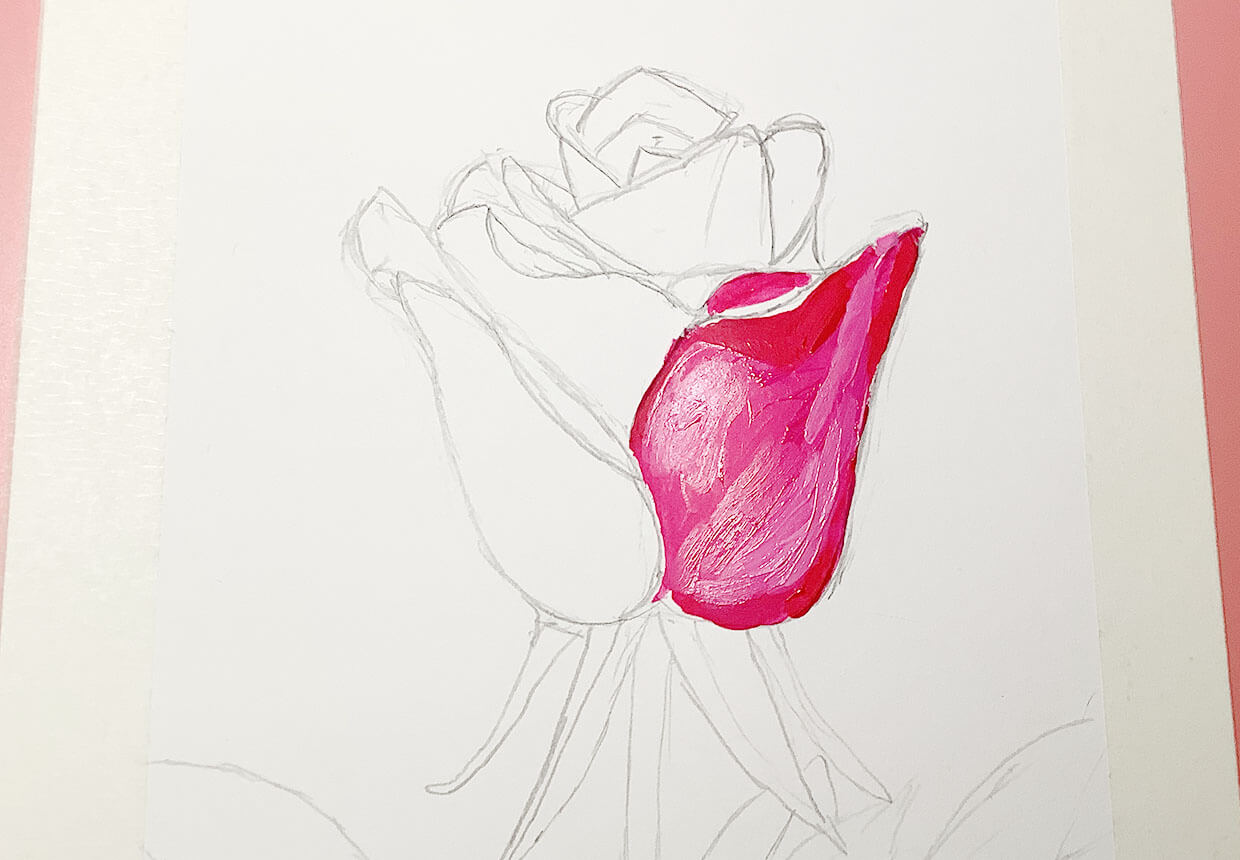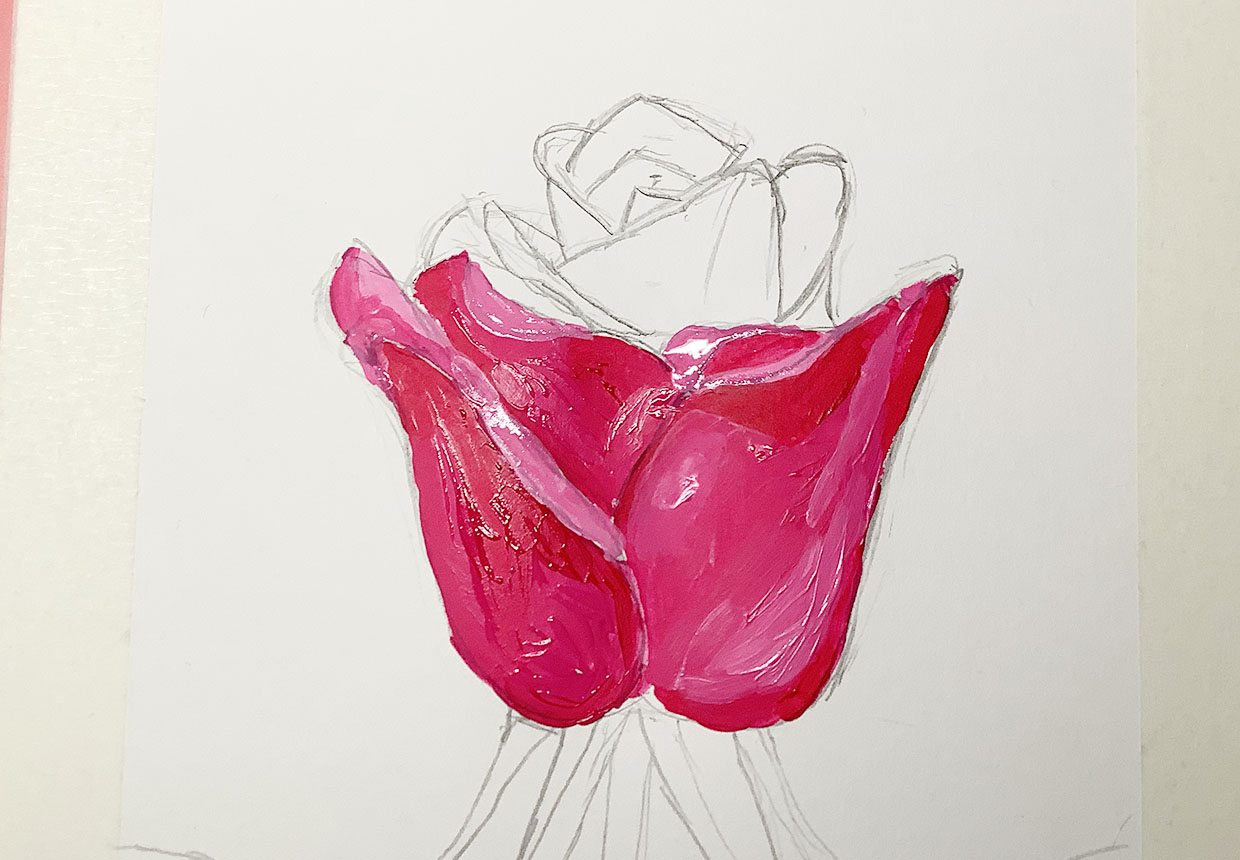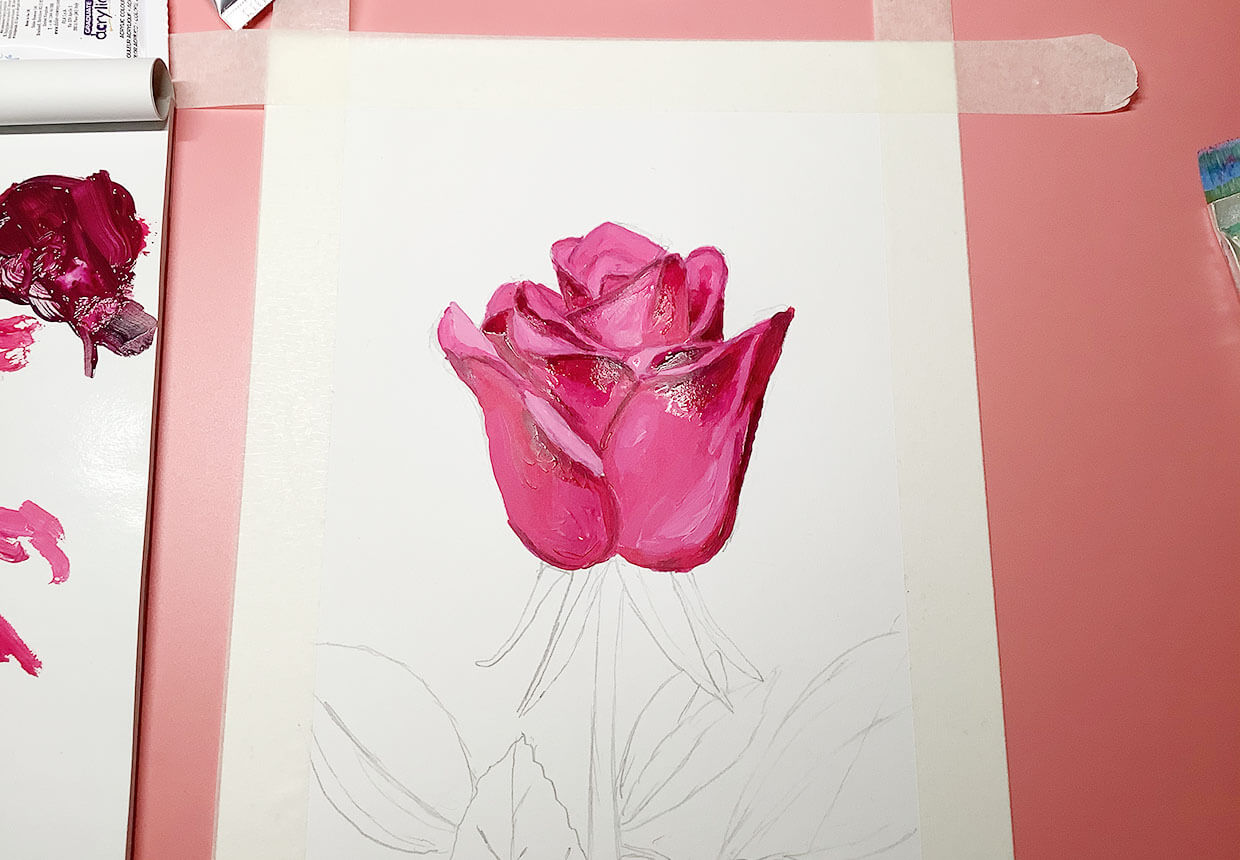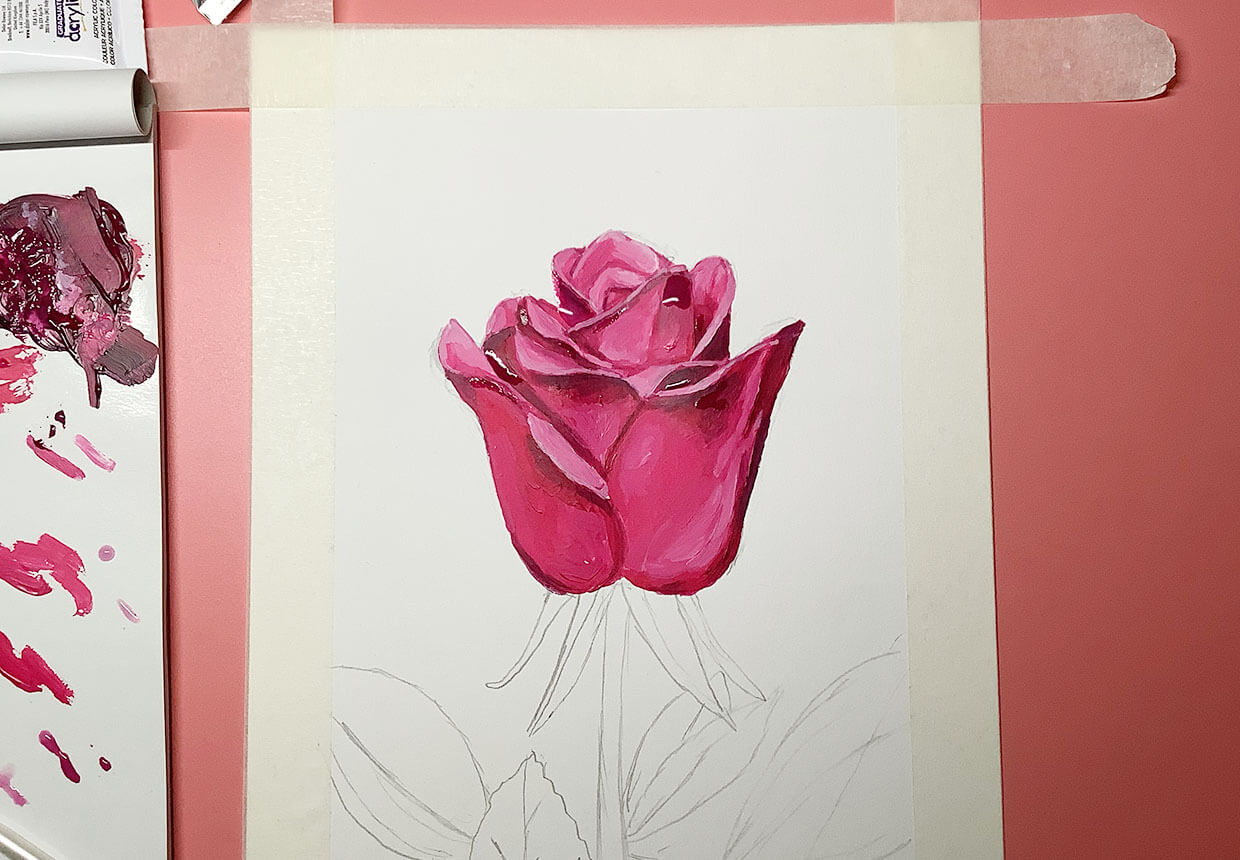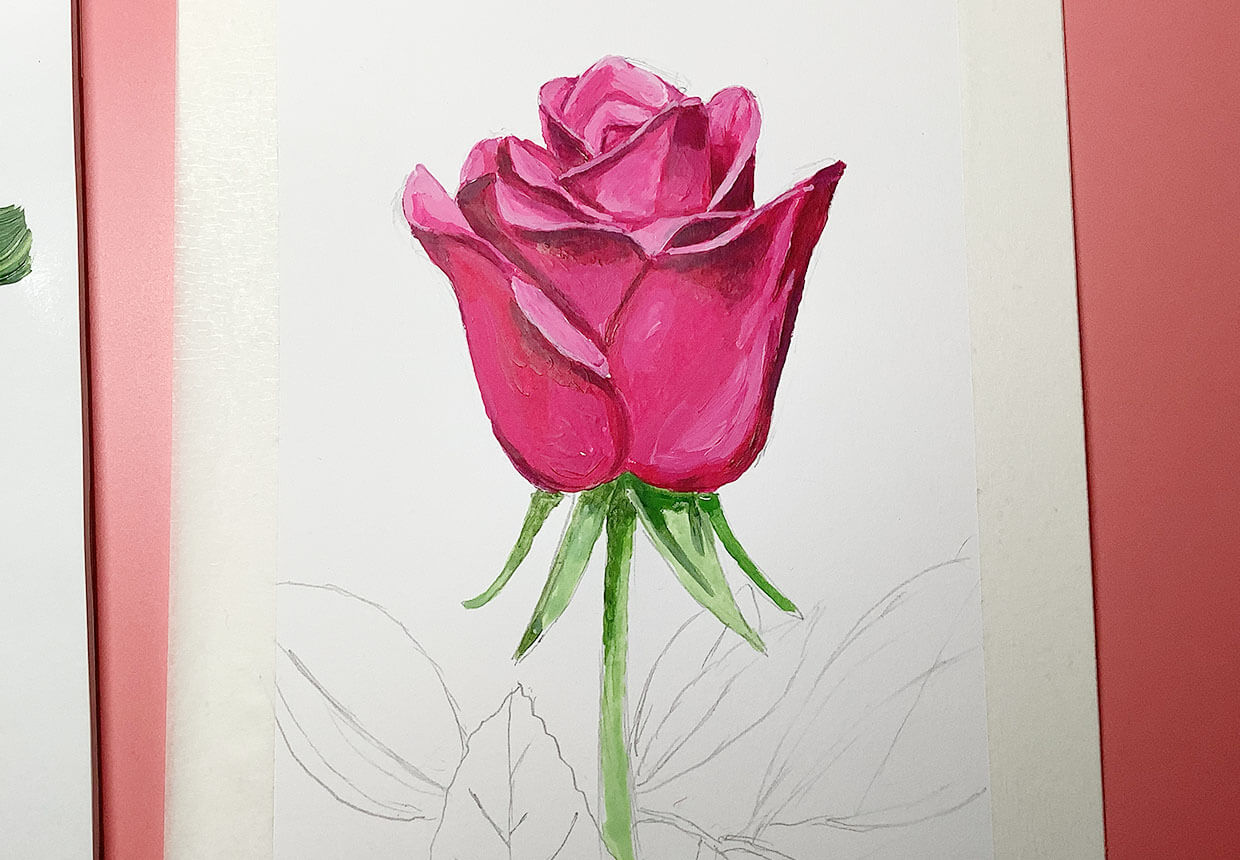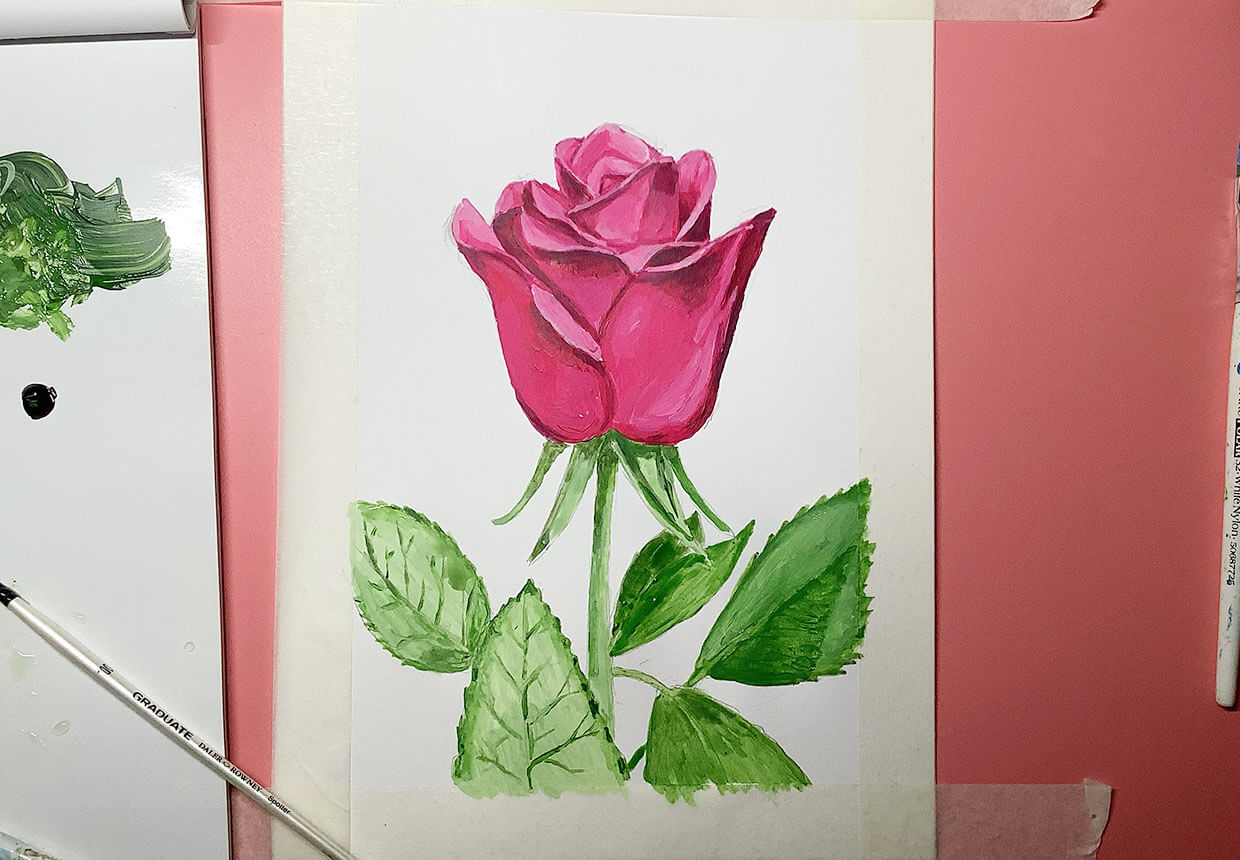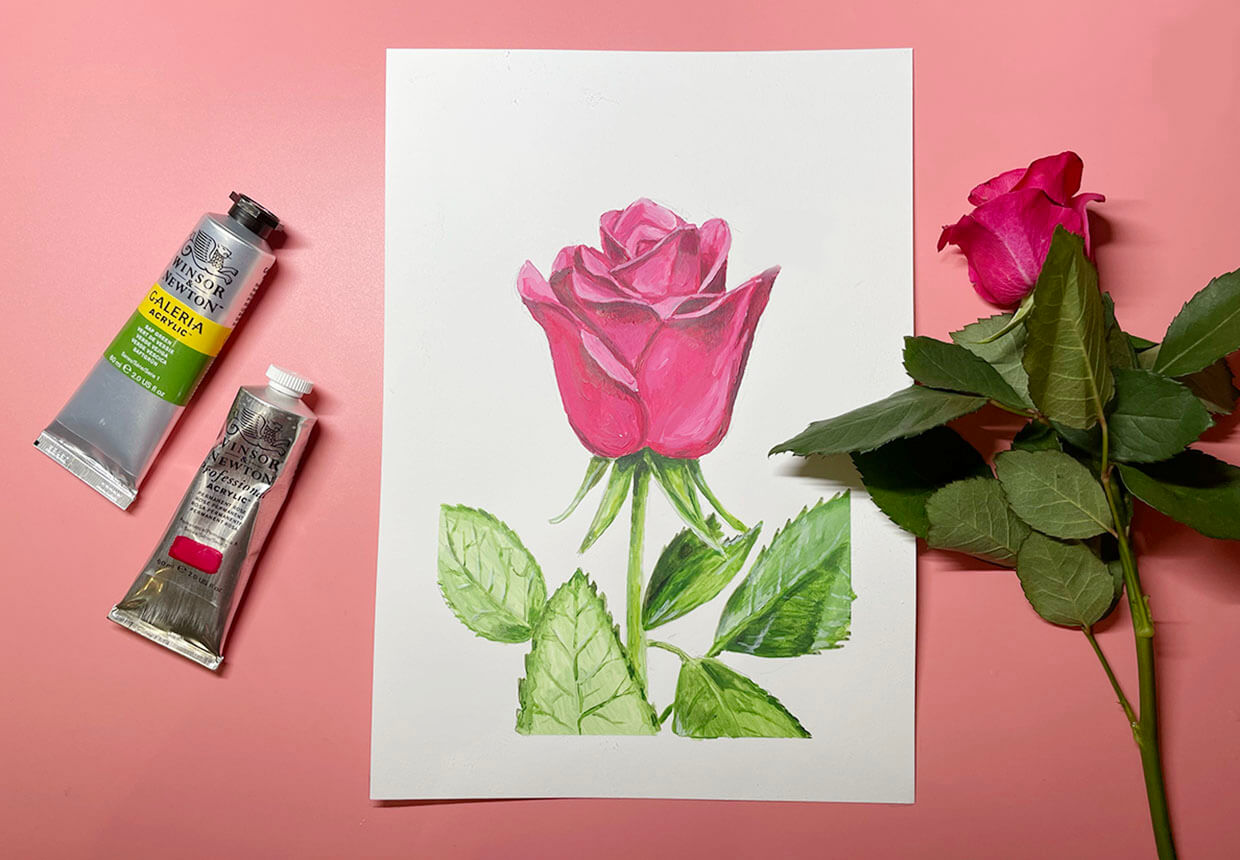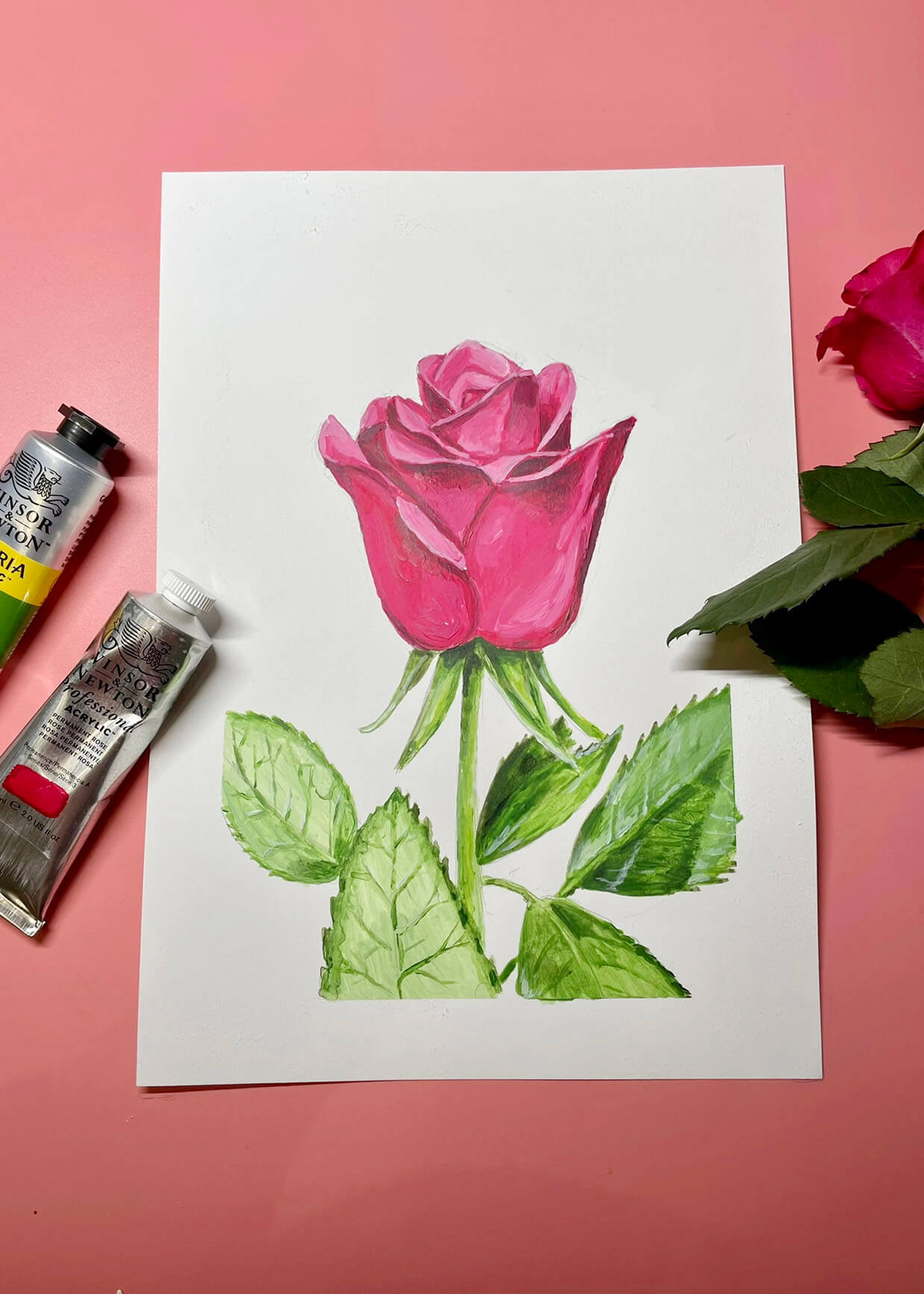If you want to get into botanical art, creating a rose painting is a good place to begin. Roses come in an array of beautiful colours including vibrant pinks, deep reds and warm oranges. They’re very satisfying to paint and the finished artwork can look stunning.
It’s also a good way to practice your tonal painting skills and get to grips with the basics of colour mixing. Mastering these skills will help you to take your painting to the next level.
In this tutorial, we’ll show you how to paint a rose step by step. You’ll learn how to sketch the outline of your rose, how to build up the shading on the petals and how to add a delicate stem.
Painting from life may feel a little daunting if you haven’t tried it before, but we’re going to break the process down into easy steps for you. You can also work from a photo if you find that easier.
In this rose painting tutorial, we’ll demonstrate how to paint a rose using acrylic paints. Acrylic paints are a good choice for this project – they have rich, opaque colours and are highly blendable.
Unlike watercolours, acrylic paints are very forgiving. If you make a mistake, you can simply paint over the top and no one will ever know!
Rose painting video tutorial
Rose painting materials
Here’s what we recommend you’ll need for this rose painting project…
Winsor & Newton Galeria sap green paint
If you’re going to be doing a lot of botanical painting, buy a tube of sap green paint. Sap green is perfect for painting leaves, stems and foliage, as it gives a very natural-looking shade of green.
Most acrylic paint producers include sap green in their ranges, but the colours vary slightly between brands.
We like the sap green in the Winsor & Newton Galeria range – it’s highly pigmented and less expensive than many professional-standard acrylic paints. It’s good value for money because a little goes a long way.
Winsor & Newton Galeria permanent rose paint
When you picture a rose in your mind, it’s almost certainly a pink one. If you want to produce that rich pink shade then you need the right paints to hand.
In order to paint a rose in that distinctive colour, buy a tube of permanent rose for your stash.
For this project, we’re using permanent rose paint from the Winsor & Newton Galeria range. It’s a vibrant acrylic paint that blends well and is reasonably priced. Overall, it’s perfect for this rose painting project. It's a very vivid shade, so we'll be blending it with a little red paint to soften the colour.
Winsor & Newton Galeria acrylic paint set
For this rose painting project, you will need a few other colours to create shadows and highlights.
If you don’t already have an acrylic paint set, invest in one with a good selection of shades like this one from Winsor & Newton. These paints will blend well with the sap green and permanent rose Galeria paints we’ll be using to create our rose painting.
This paint set includes a great choice of bold colours that you’ll be able to use for other projects too. This is a high-quality, affordable paint set that’s ideal for beginners and art students to use in their work.
Mixed media paper
Choosing the right paper for this project is very important. If you use paper that’s too thin, it’s likely to warp when you add your paint. Look for a heavy-weight paper that’s designed for acrylic paints, such as this mixed media paper pad.
Mixed media pads are very handy to have, as you can also use them for watercolour painting, sketching and other mediums. This is a great option if you only use acrylic paints occasionally. You can buy acrylic paint paper pads, but these tend to be more expensive.
Pro Arte Polar five brush set
Pro Arte’s Polar brushes are designed for beginners and art students. While this is quite a small brush set, it includes brush shapes suitable for this rose painting tutorial.
These are synthetic brushes, so they can also be used with watercolour, oil or gouache paints. Synthetic brushes keep their shape well and will last for a long time if you take good care of them.
Make sure you wash your brushes thoroughly when you finish painting and never leave them sitting in a pot of water for a long time.
- Buy the Pro Arte Polar five brush set from Cass Art
Techne – Artist & Drafting Lamp
We’re also going to be using the Techne – Artist & Drafting Lamp from The Daylight Company.
The Techne Lamp is a daylight lamp, meaning that it recreates the quality of natural light. This is really useful if you’ve started your painting outside and you want to continue painting indoors. It will help you to paint the colours more accurately.
It can be attached to your desk or easel and adjusted to suit your lighting needs. There are three brightness settings, so you can choose the right one for your current work in progress.
- Get the Techne – Artist & Drafting Lamp from Cass Art

